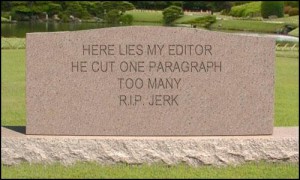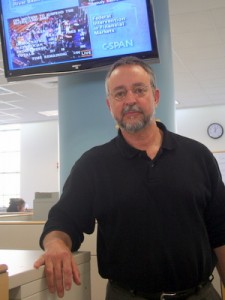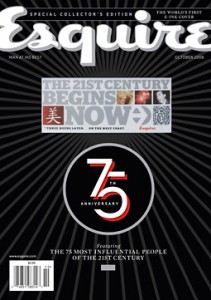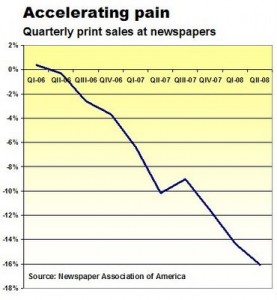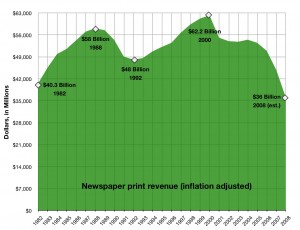Investors were all aflutter at the news late last week that Mexican billionaire Carlos Slim had purchased a 6% interest in The New York Times Co. Slim, whom Forbes estimates to be the world’s second richest man behind Warren Buffett, has made his fortune principally by buying low and selling high. It helps that he owns one of the world’s largest privatized monopolies, Telefonos de Mexico, which he acquired in 1990.
Shares of NYT jumped nearly 15% on Thursday on the news, helped by Slim’s statement to reporters that his interest in the publisher was “purely financial.” Are newspaper stocks finally going to be perceived as the bargain investors believe them to be? Probably not, argues The Wall Street Journal‘s Martin Peers. Writing in Thursday’s “Heard on the Street” column, Peers notes past failures by investors who tried to wrest control of the Times company from the controlling Ochs/Sulzberger family. He also brings up Slim’s $2 billion bet on failed retailer CompUSA as an example of the billionaire’s fallibility. Finally, he points to the lofty price/earnings ration of the NYT Co. – more than 20 right now – as reason to “see Thursday’s pop in Times stock as a selling opportunity.”
Tech Publisher Bucked Trend, Cashed in With Print

In the publishing market for technology enthusiasts, print has almost evaporated. That’s what makes O’Reilly Media’s Make magazine so remarkable. Make was launched well after the destruction of the technology print media had already begun. The publishers thought there was value that print brought to their target audience of tinkerers that couldn’t be reproduced on a Web page. Not that the Internet isn’t important. In fact, most of Make‘s circulation development has been done on line. The publication also hosts a series of popular fairs where readers show off their inventions. But in a market that has largely turned up its nose at print, Make is a notable – and profitable – exception.
In this podcast, publisher and editor Dale Dougherty tells of the counter-intuitive wisdom that led to the creation of the Make brand. The speech is only 17 minutes long, but it will remind you of the value that print still brings to the publishing equation when applied sensibly.
Rx for Newspaper Websites
Mark Potts has a set of idea for fixing newspaper websites that are well worth reading. Potts recently wrapped up an engagement with Philly.com in which he says staff attempted to break the mold with some success. What is the mold of newspaper websites? Too much information crammed into too little space and surrounded by blinking banners ads. This is a legacy of the print mentality, Potts writes. Why do newspapers still organize everything by news/features/sports/metro/arts when they don’t have to be tied to such rigid structure on the Web? And what’s with all the banner ads, which are the least effective form of online advertising? Why not do more with targeted text ads and search? Again, the legacy mentality favors display ads, he says.
Potts recommends that publishers take more risks and look at the example of the online pure-plays for inspiration. Web publishers think nothing about launching mobile services, for instance, and if the gamble doesn’t pay off, they just shrug. Newspaper publishers, on the other hand, research any new initiative to death and then finally launch something that’s uninspired and late. Classified ads are dead, Potts says. Deal with it. And newspaper sites still aren’t local enough. Aggregate and outsource content to readers. Lively debate ensues in the comments section.
Easy Come, Easy Go
Novato, Calif.’s hometown newspaper since 1922 is no more. The Advance shut down last week, citing the usual factors: tough economy, stiff online competition, spiraling costs. The paper hadn’t made a profit in nine years. An unbylined announcement ticks off a list of investments and innovations the Advance undertook in an effort to stay afloat – adding staff, sectionalizing and boosting circulation among others – but the efforts were fruitless. The paper’s demise apparently wasn’t for lack of quality. It won the California Newspaper Publishers Association’s highest award four consecutive years through 2006.
Meanwhile, the state with the toughest economy in the nation saw the launch of a new title. The successful Florida Weekly will come to Naples on Oct. 2. The lifestyle-oriented tabloid covers news, arts and entertainment, dining, regional business, and real estate. The original Florida Weekly of Ft. Myers has a readership of 50,000, according to Editor & Publisher. Naples Florida Weekly will be distributed through more than 500 newsstands and by mail.
Miscellany
Tragedy in San Francisco: the long-suffering Chronicle yesterday published obituaries for several of its Sunday comics. Among the deceased are Mister Boffo, the Fusco Brothers, Brevity, Tokyopop and Sherman’s Lagoon. Dilbert is also moving. The decision was guided by more than 13,000 responses to a poll conducted this summer. “We know that readers feel strongly about comics,” an unnamed Chron editor writes. Indeed they do.
The Bowling Green Daily News is an afternoon daily that has adopted a “print first” strategy. Its audience isn’t terribly Internet-savvy and the afternoon publishing schedule limits its timeliness. What’s more, the paper is still growing revenue. The managing editor sees no reason to favor a website because print pays the bills. Moreover, the capital investment required to launch a competing website and put a staff in place is prohibitive, he says. He is on drugs.
The Sacramento Bee is cutting staff by 7% on top of an earlier round of cuts in June. This time, a buyout offer enticed 87 people to leave the company, including 23 newsroom employees. The editorial department had been largely spared from the June round of cuts, but the reduction took a bigger toll, with the features department along losing 11 people. Bee executives said they didn’t know if more cutbacks would be needed.
Gannett Blog reports on an innovative idea by the Pensacola News Journal: it’s distributing newsstand copies with a distinctive front page. The idea is to attract the generally younger group of readers that buys newspapers on impulse. Single-copy sales are about 18% of the Pensacola paper’s circulation, according to Gannett Blog. Commenters generally approve of the idea.
The Fort Worth Star-Telegram plans to sell its 88-year-old headquarters building at the northwest corner of Seventh and Taylor streets. Its 184,000 sq. ft. are simply more than the shrinking newspapers needs, the publisher says.
The Rushville (Inc.) Republican joins the ranks of newspapers that are cutting out Monday editions. The move will save enough money to enable the paper to avoid layoffs, at least for now.
And Finally…
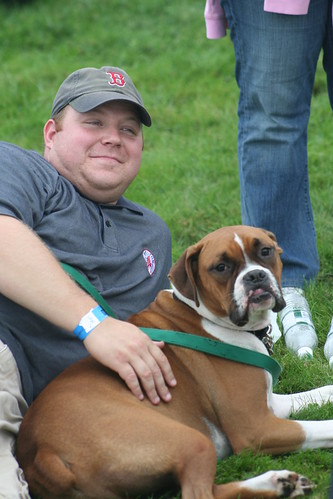 While strolling through Pet Rock 2008, the annual festival in east-central Massachusetts that brings hundreds of dog owners together in a celebration of their pooches, we were struck by the old cliche that dog owners and their pets frequently look alike. We started snapping examples where we thought this was true. While the cliche is by no means universally valid, there are some striking similarities in some cases. Just for fun, here are a few examples. Do you have any of your own? Send us a link to the online photos or post them in the comments section and we’ll add them to our Flickr slideshow.
While strolling through Pet Rock 2008, the annual festival in east-central Massachusetts that brings hundreds of dog owners together in a celebration of their pooches, we were struck by the old cliche that dog owners and their pets frequently look alike. We started snapping examples where we thought this was true. While the cliche is by no means universally valid, there are some striking similarities in some cases. Just for fun, here are a few examples. Do you have any of your own? Send us a link to the online photos or post them in the comments section and we’ll add them to our Flickr slideshow.

